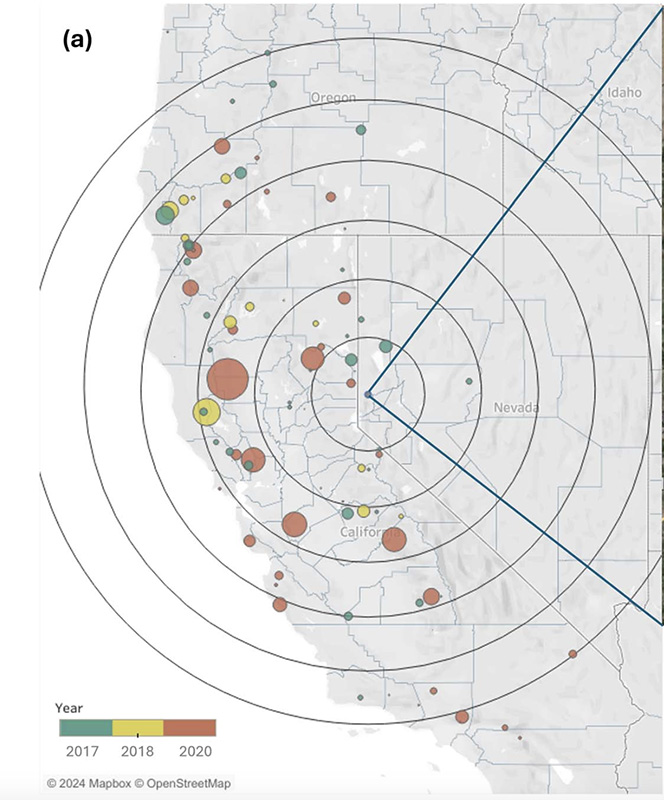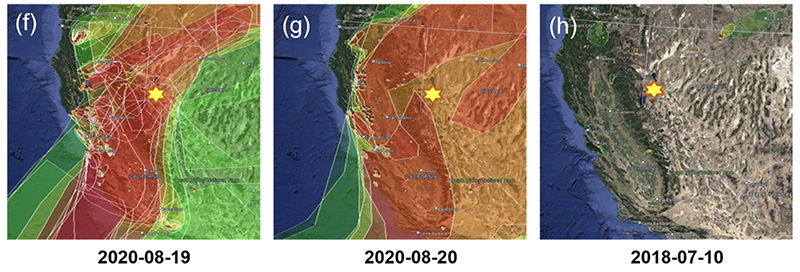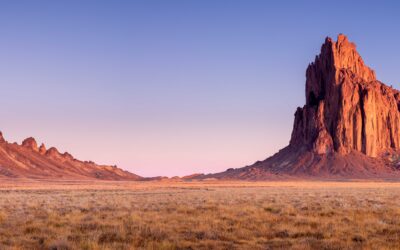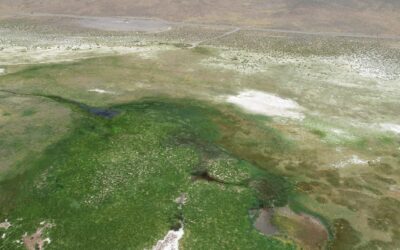The comprehensive research examined air quality in Reno, Nevada during 106 wildfires to illuminate the atmospheric and public health impacts of smoke.
Reno, Nev. (May 27, 2025) – With wildfires increasing in frequency, severity, and size in the Western U.S., researchers are determined to better understand how smoke impacts air quality, public health, and even the weather. As fires burn, they release enormous amounts of aerosols — the vaporized remains of burning trees and homes that enter the atmosphere and the air we breathe. Now, a new study dissects these aerosols and gases to pinpoint their potential effects on our health as well as the planet’s short and long-term weather.
The research, published in April’s issue of Environmental Science: Atmospheres, measured air quality in Reno, Nevada over a 19 month period between 2017 and 2020 to capture both smoky and clear days. During this timeframe, smoke from more than 106 wildfires impacted the city’s air. DRI scientists Siying Lu and Andrey Khlystov led the research, which found increases in both fine aerosols (known as PM 2.5 for the size of the particulate matter) and carbon monoxide during smoky days. During the fire-prone late summer months analyzed during the study, wildfire smoke accounted for 56% to 65% of PM 2.5 and 18% to 26% of carbon monoxide concentrations in Reno air. The results have implications for weather, cloud formation, and public health.
“We know that Reno is frequently impacted by wildfires in summer, so we wanted to compare smoky and non-smoky days and measure the impacts on local air quality,” said Lu, who completed the research as part of her PhD work. “Although we focused on Reno for this study, we developed the method so that it can theoretically be applied anywhere.”

The research team started on the roof of DRI’s Reno campus, where they set up equipment that could measure the size of atmospheric particles. This information is important because it determines how the particles interact with both the atmosphere and the human body. Larger particles can affect our upper respiratory tract, whereas fine aerosols can travel deeper into lungs.
The researchers also collected data from a downtown Reno EPA air monitoring station that provided hourly concentrations of PM2.5, ozone, carbon monoxide, and other air pollutants. The data also provided concentrations of potassium, an element released by burning trees and other wood which can be used to confirm the presence of wildfire smoke in the air.
The team further verified when air pollution was caused by wildfire smoke by using satellite images to identify visible smoke plumes and fire location information from NASA and NOAA. With an additional tool from NOAA, they could track Reno’s winds back in time to verify that they had indeed passed through a wildfire area.
Wildfire aerosols have a complicated effect on the weather. On one hand, they can act as a filter to scatter and reflect incoming sunlight, creating a cooling effect. On the other hand, they contain light-absorbing material, such as soot and brown organic compounds, that can cause warming. Larger aerosols can promote cloud formation and duration by acting as nuclei for water vapor to condense around. The data showed that smoky days contained aerosols that are likely to act as cloud nuclei at concentrations up to 13 times higher than average.
“We figured out that the size of particles is quite distinct during fires from a normal day in Reno, which has implications for cloud formation and how sunlight scatters, as well as public health,” said Khlystov, Research Professor of Chemistry at DRI.
The study also found carbon monoxide present in higher concentrations during smoky days. Breathing high concentrations of carbon monoxide can reduce the ability of blood to carry oxygen to your brain and other organs.
In contrast, concentrations of nitrogen oxides and ozone were present in Reno’s air at similar levels during both smoky and average days. They attribute this to their release by vehicle traffic and chemical reactions induced by sunlight.


“Our research offers one of the most comprehensive looks at how wildfire smoke is affecting air quality in the Western U.S.,” Lu said.
Lu is working on a machine-learning program to facilitate this kind of air quality research by automating the ability to identify when wildfire smoke is present in the air. This could potentially be used to build an automated app that can identify real-time smoke impacts by location and facilitate air quality research and public health messaging.
—————————————————————————————————————–
More information: The full study, Particle size distributions of wildfire aerosols in the western USA, is available from Environmental Science: Atmospheres at https://doi.org/10.1039/D5EA00007F
Study authors include: Siying Lu (DRI), Chiranjivi Bhattarai (DRI), Vera Samburova (DRI, UNR), and Andrey Khlystov (DRI)
About DRI
We are Nevada’s non-profit research institute, founded in 1959 to empower experts to focus on science that matters. We work with communities across the state — and the world — to address their most pressing scientific questions. We’re proud that our scientists continuously produce solutions that better human and environmental health.
Scientists at DRI are encouraged to follow their research interests across the traditional boundaries of scientific fields, collaborating across DRI and with scientists worldwide. All faculty support their own research through grants, bringing in nearly $5 to the Nevada economy for every $1 of state funds received. With more than 600 scientists, engineers, students, and staff across our Reno and Las Vegas campuses, we conducted more than $52 million in sponsored research focused on improving peoples’ lives in 2024 alone.
At DRI, science isn’t merely academic — it’s the key to future-proofing our communities and building a better world. For more information, please visit www.dri.edu.
Media Contact
Elyse DeFranco
Lead Science Writer & Public Information Officer
elyse.defranco@www-dev.dri.edu


